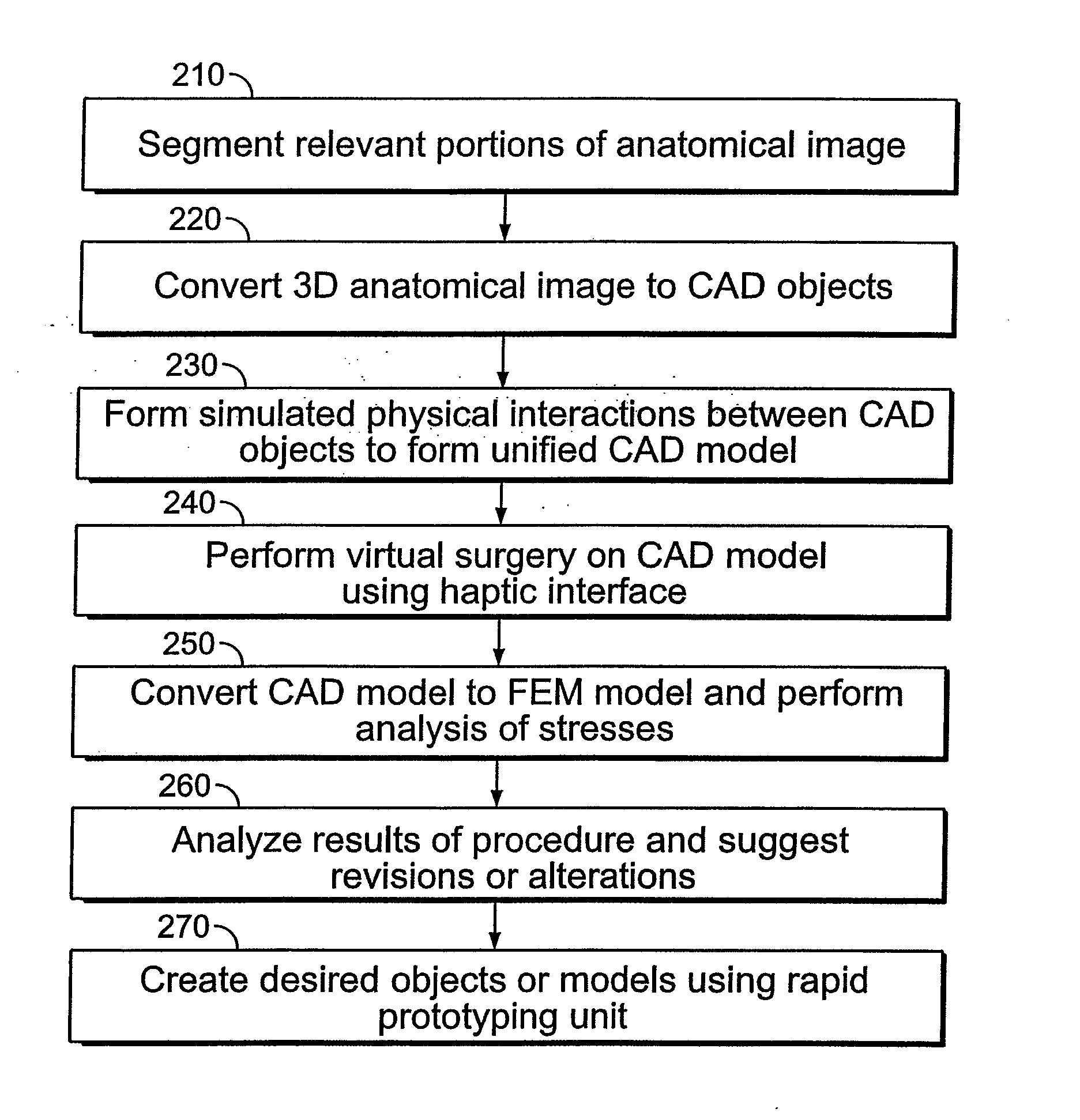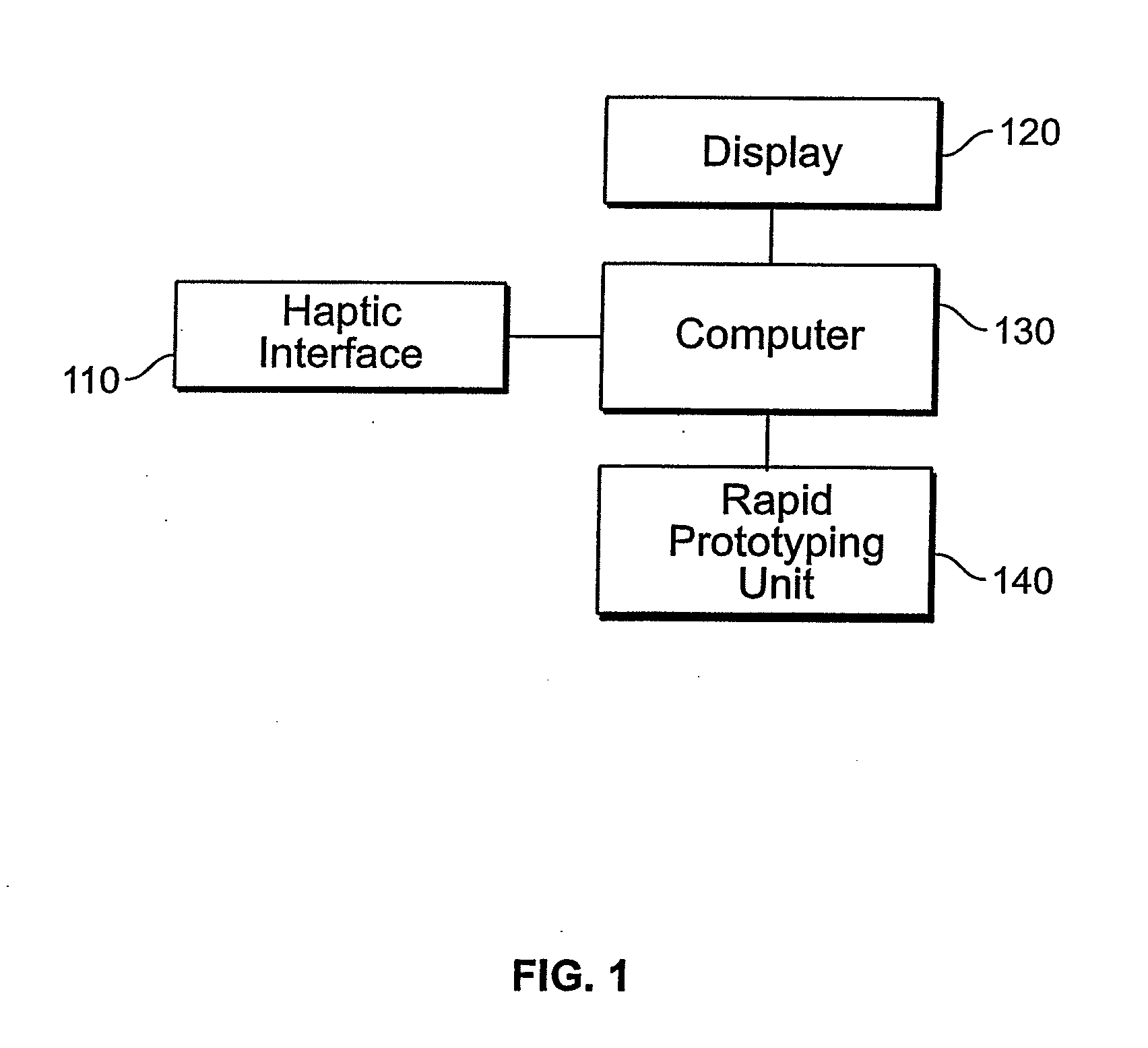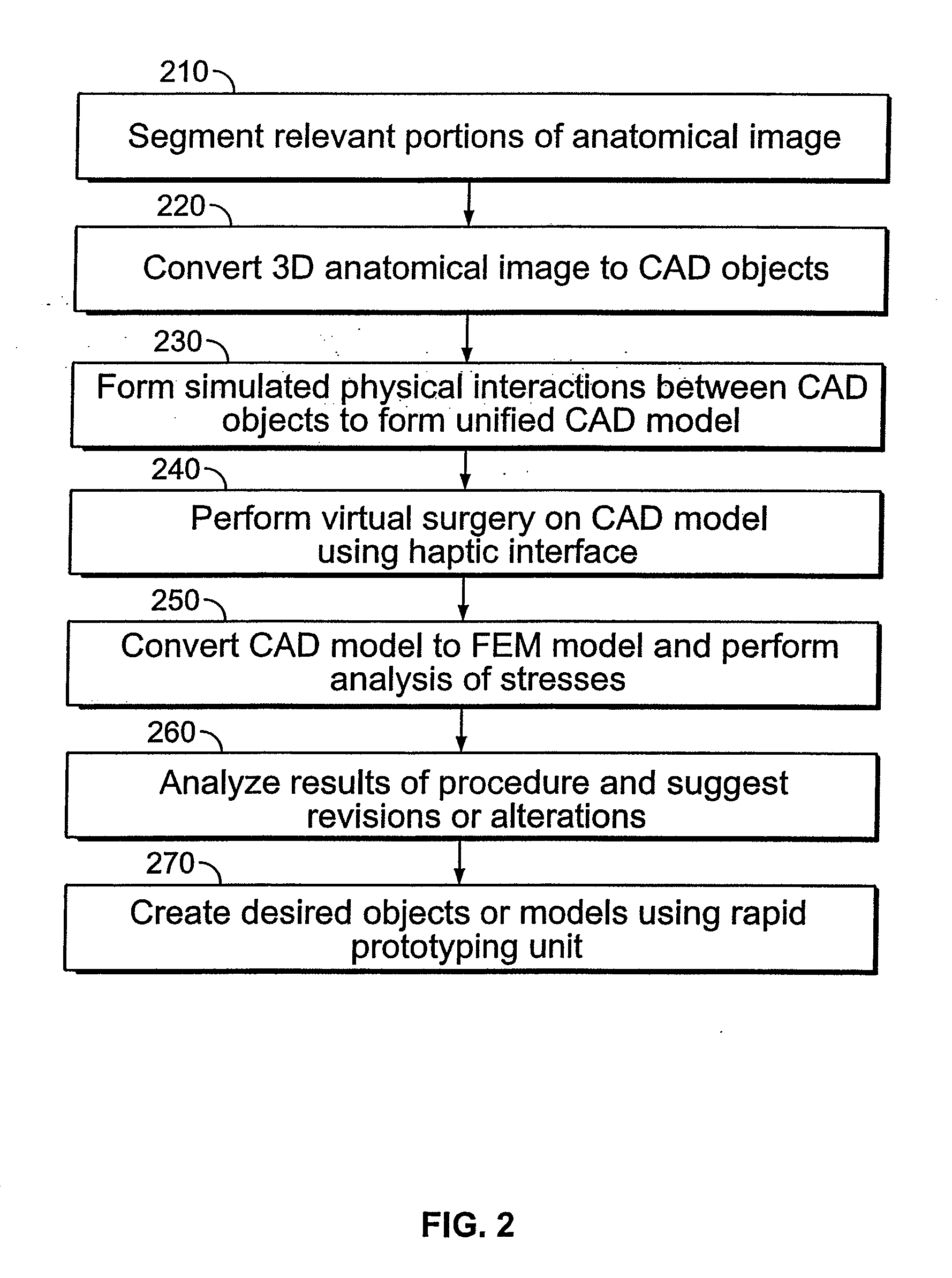Computerized Planning Tool For Spine Surgery and Method and Device for Creating a Customized Guide for Implantations
a technology of spine surgery and planning tool, which is applied in the direction of instruments, prostheses, applications, etc., can solve the problems of not knowing exactly where each screw will go, how much distraction will be applied, or what length of screw or rod will be needed, and it is difficult for surgeons to predict preoperative images. to achieve the effect of maximizing the accuracy of prediction, ensuring correct alignment of implants, and reducing labor
- Summary
- Abstract
- Description
- Claims
- Application Information
AI Technical Summary
Benefits of technology
Problems solved by technology
Method used
Image
Examples
Embodiment Construction
[0022]While the present invention is susceptible of embodiment in various forms, there is shown in the drawings and will hereinafter be described a presently preferred embodiment with the understanding that the present disclosure is to be considered an exemplification of the invention and is not intended to limit the invention to the specific embodiment illustrated. It should be further understood that the title of this section of this specification, namely, “Detailed Description of the Invention”, relates to a requirement of the United States Patent Office, and does not imply, nor should be inferred to limit the subject matter disclosed herein.
[0023]Referring now to FIG. 1, a system diagram of the computerized planning tool for spine surgery according to one embodiment of the invention is shown. FIG. 1 includes a haptic interface 110 that allows the user to interface with computer 130. The simulated surgery is displayed to the user on display 120. Computer 130 is also in communicat...
PUM
 Login to View More
Login to View More Abstract
Description
Claims
Application Information
 Login to View More
Login to View More - R&D
- Intellectual Property
- Life Sciences
- Materials
- Tech Scout
- Unparalleled Data Quality
- Higher Quality Content
- 60% Fewer Hallucinations
Browse by: Latest US Patents, China's latest patents, Technical Efficacy Thesaurus, Application Domain, Technology Topic, Popular Technical Reports.
© 2025 PatSnap. All rights reserved.Legal|Privacy policy|Modern Slavery Act Transparency Statement|Sitemap|About US| Contact US: help@patsnap.com



